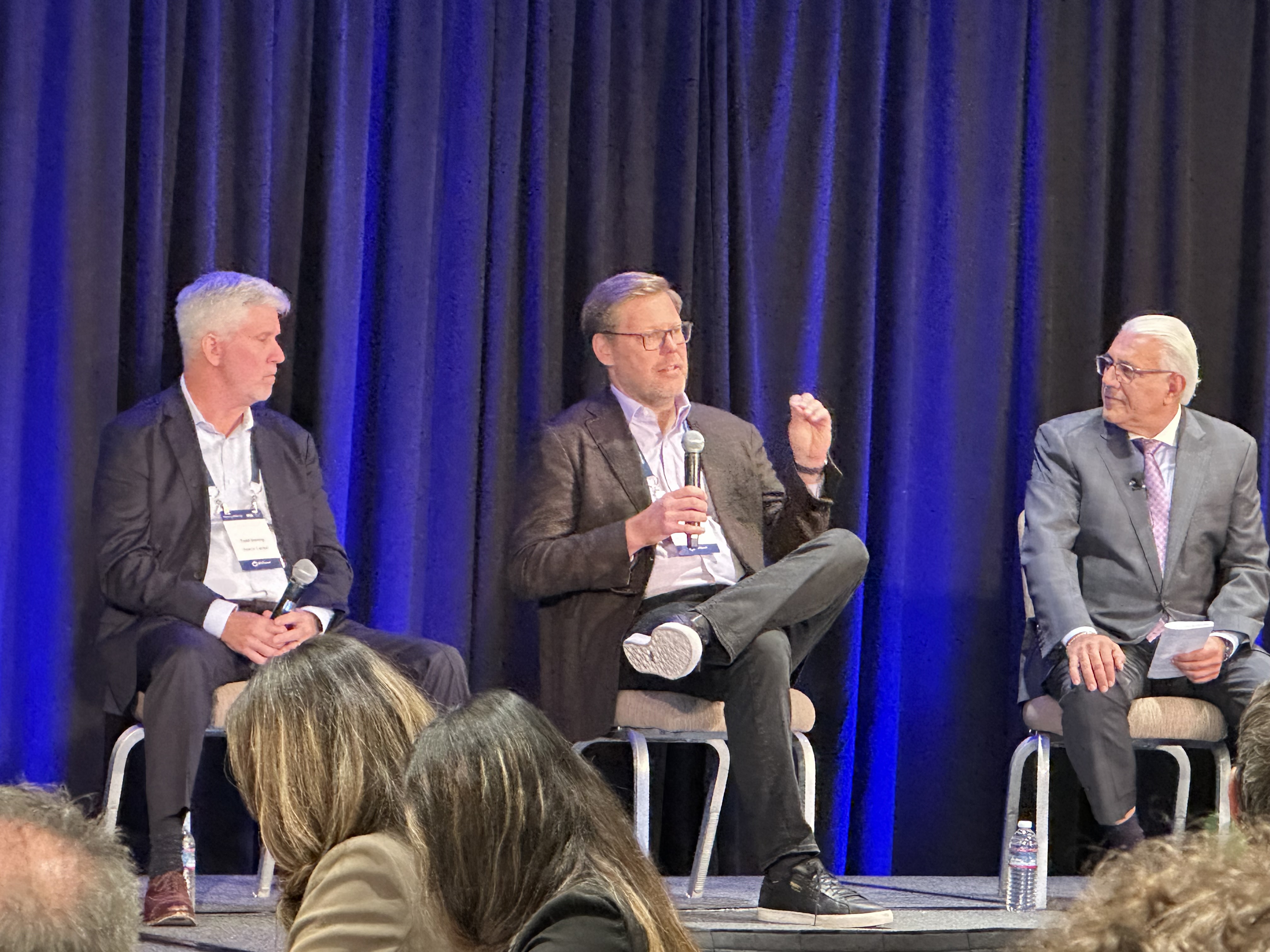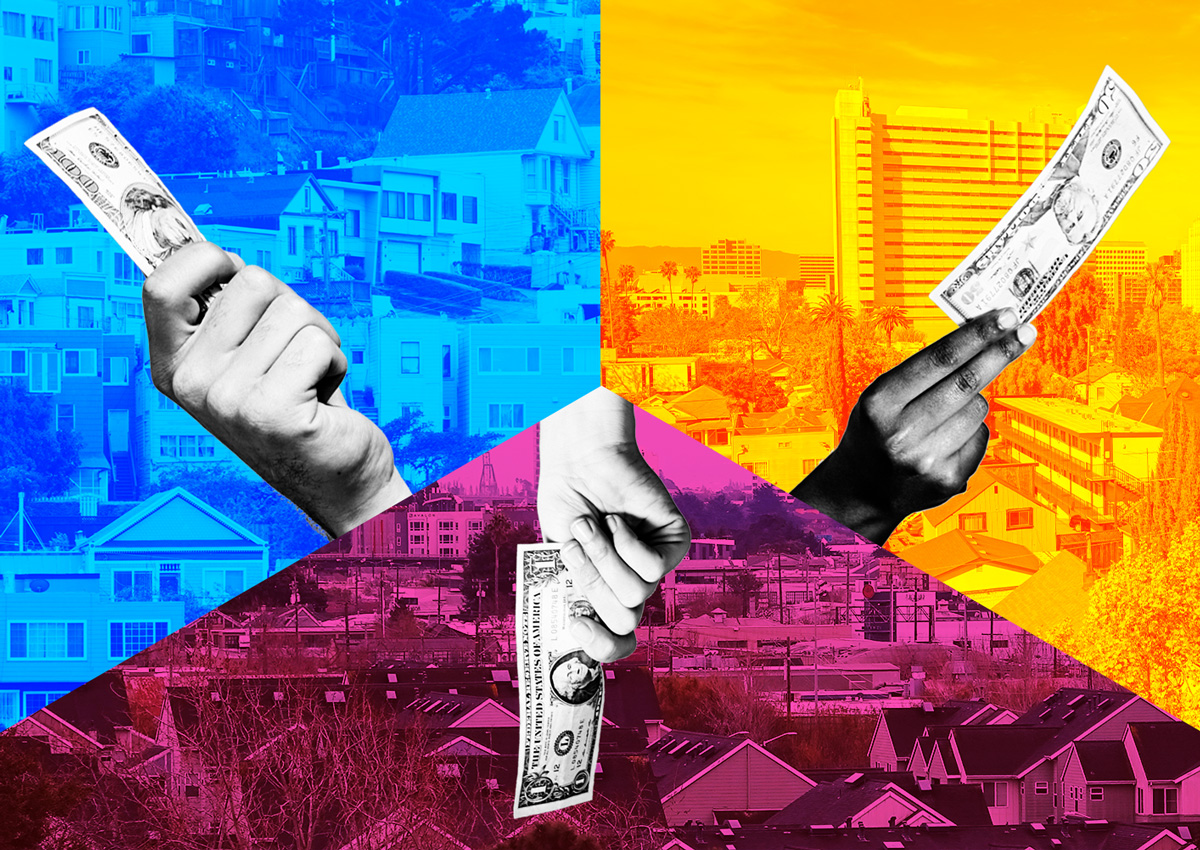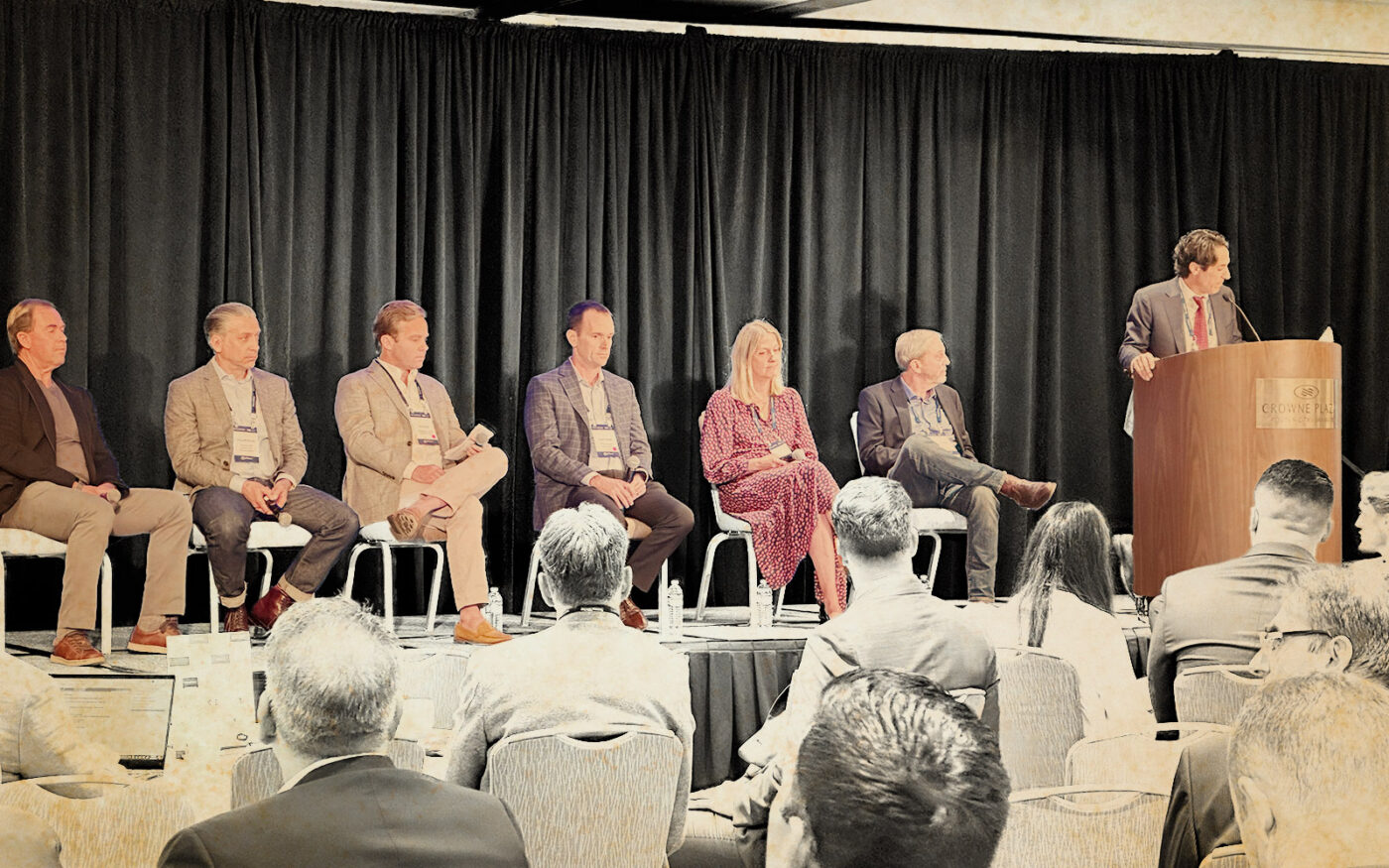Is it “Stay Alive Until ‘25” or “Take Your Licks Until ‘26”?
Bay Area multifamily developers, owners and investors at the Marcus & Millichap NorCal Multifamily Forum said they weren’t sure exactly when the apartment market would recover from the hits it has taken over the last three years. But many said that with rents largely back to pre-pandemic levels, plus the lack of housing affordability, near-zero apartment construction starts and low unemployment rates, the Bay Area apartment market is still a good long-term investment — emphasis on the long-term.
“We’re in the fourth inning of this market cycle,” said Angela Biggs, senior vice president of investment at Grosvenor, an assessment with which many of her fellow owner-operator panelists agreed.

At the forum, held Oct. 26 at the Foster City Crowne Plaza hotel, Marcus & Millichap CEO Hessam Nadji declared Bay Area apartments “an absolute diamond in the rough,” a statement that he said would have seemed impossible a few years ago.
“No one ever thought of the Bay Area as a value play because it was always leading in price appreciation in every metric,” he said. “It has been overlooked.”
A few investors have “started taking a very cautious view of investments in San Francisco and some have crossed it off their lists,” according to Frank Liu, managing director at Canyon Partners Real Estate, an investment firm with $24 billion in assets under its management.
“You really have to get paid for the risk of doing deals here right now,” he said, adding that Canyon is still funding mezzanine loans in the low- to mid-teen range, and construction loans as well.

Peter Casey of San Francisco-based real estate investment firm Hamilton Zanze referenced what sounded like the Veritas default when he called limited institutional interest in a “large portfolio, local Bay Area operator, all San Francisco multifamily, downtown and various neighborhoods” an “interesting data point.” He said he spoke to 60 capital partners around the globe about the portfolio and heard almost entirely negative feedback.
“There was one group that had the capability of writing a $300 million equity check to take that deal down,” he said. “Everyone else — I go to New York money, I go to international money — all of them say, ‘Unfortunately San Francisco is tarnished for XYZ reason or valuation is off because of XYZ reason.’”
“Blessing in disguise”
John Seebree, director of Marcus & Millichap’s National Multi-Housing Group, said that the capital situation was challenging, but could be worse. He was one of many panelists to compare and contrast the current market with the financial crisis of 2007-2008.
“The banks have money,” he said. “It’s expensive money, but they have money.”
It could be a “blessing in disguise” that the Bay hasn’t bounced back faster, he said, because the lack of new product will put the area in a better situation moving forward compared to markets such as Nashville, Denver and Orlando, which have seen a lot of multifamily construction and may not have the sustained demand to fill the apartments once they’re built.
“They’re going to be way out over their skis for a couple of years,” he said.
Also striking a forward-looking note, several panelists said that those who left the Bay Area over the last few years are being replaced by those who make more money. Yet even these high-income workers can’t buy a home due to low inventory, high prices and higher interest rates. That affordability gap should provide a big lift to the rental market.
Kevin Guibara, president of Silicon Valley Real Estate Investment, said his company had seen “great rent recovery” in its apartment properties since February, especially in San Mateo County, which is now at or above pre-pandemic levels. That’s due largely to new tech workers coming to the area.
“AI might take away jobs everywhere else but it’ll add jobs here,” he said.
Those returning workers will compete for a few apartments, the panelists agreed. Al Pace, CEO and co-founder of Pacific Urban Investment, said his “vintage product, what others would call Class B” was 95 percent occupied in the Bay Area and he expected to see that continue with fewer new options coming online.
Naive or stupid?
Developers at the forum said they needed construction costs to come down at least 10 percent, along with yields rising higher than 10-year Treasury bonds to attract capital sources so they can break ground.
Builders must be “naive or stupid” to think they’re going to get institutional capital, likely into 2025, according to Brad Blake of Blake Griggs, a private commercial real estate development company based in Danville.
He said his firm is completely focused on entitlements, not building, for the next two years. All postulations about coming rent rate increases and returning tech workers are secondary to getting the money flowing again, he said.
“There’s no discussion of fundamentals, like, ‘Is this a good site? Is there demand? Is there job growth?’” he said. “That’s a given in the Bay Area and I think for the sites that this group works on, it doesn’t even enter the conversation.”
The cost of construction was also a major concern, though developers said that costs have started to inch down since pricing peaked last year. Those prices could come down further if the projects that general contractors and their subcontractors have lined up into next year don’t move forward, they agreed.
“I think there’s a false narrative of how much product there might be out there for these guys to bid on,” said Doug McDonald, president of SummerHill Homes, referring to large-scale construction projects. “They’re being asked to rebid constantly right now and those bids don’t really matter unless you’re able to get a construction loan, which you can’t get.”
What money is out there is expensive, they agreed, with construction loan interest rates around 8 percent. Family offices and life insurance companies have stepped in to a certain extent, they said, but the lack of appetite from the usual institutional investors has put a hold on nearly any project otherwise ready to break ground.
“If you talk to capital right now, they don’t even want to hear the word development,” said Drew Hudacek, chief investment officer of Sares Regis Group NorCal.
Like many at the forum, Hudacek thought it was only a matter of time until that interest returns. Office is “off the table” and the “bloom has come off the rose” on industrial, while multifamily continues to be thought of as a safe long-term bet, he said.
“Interest rates just have to plateau and the dam breaks because there are so many people just wanting to get back in the market,” he said. “Multifamily is going to see a flood of capital.”
Read more



